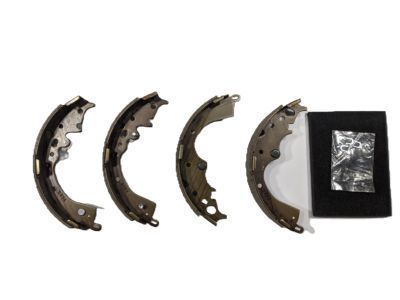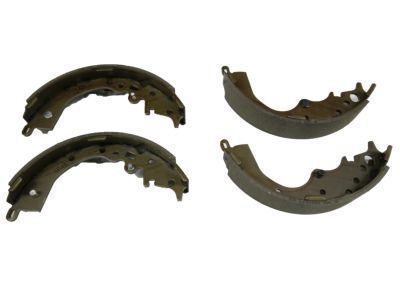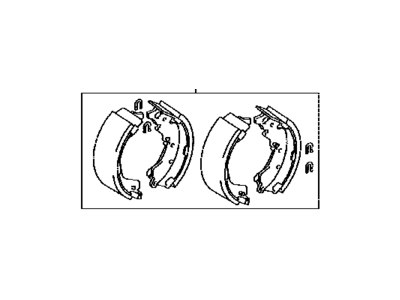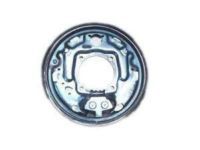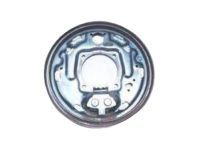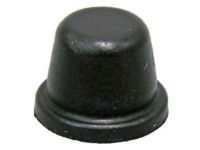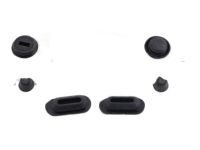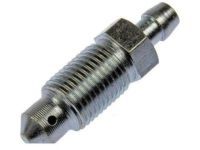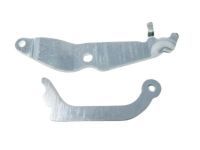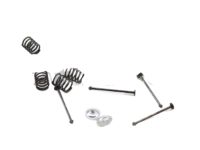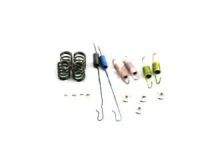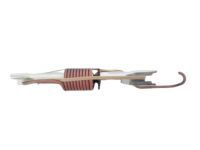To remove the rear brake assembly, first, loosen the wheel lug nuts, raise the rear of the vehicle, support it on jackstands, block the front wheels, and release the parking brake. After removing the wheel, take off the brake drum, which may require a spray of penetrating oil and some tapping with a hammer if stuck due to corrosion. Next, clean the brake shoe assembly with a brake system cleaner and remove the rubber plug from the port in the backing plate. The auto-adjust lever and the adjuster (star-wheel) can then be accessed via this port, and the brake shoes retracted using two screwdrivers. After further cleaning, remove the auto-adjust lever spring, the lever, the adjuster, the upper return spring, and the lower return spring. The front shoe hold-down spring can be removed using a designated tool or needle-nose pliers, following which the lower brake shoe strut, tension spring, and front shoe can be removed. The process continues with the removal of the rear shoe hold-down spring, rear shoe, upper strut assembly, and parking brake levers, along with the detachment of the parking brake cable. After removing the C-clips holding the parking brake levers and rear shoe together, unhook the upper return spring and upper strut assembly, separate them, and lubricate them with high-temperature brake grease. To install the assembly, first, reassemble the upper strut assembly with the upper return spring and reassemble this with the bottom parking lever on the rear brake. Next, place the parking brake lever in position and install new C-clips onto the pivot pins, lubricate the brake shoe contact points with high-temperature brake grease, and reattach the parking brake cable. The rear and front brake shoe, hold-down spring pin, and various springs and struts can then be placed into position and installed, followed by the auto-adjust lever and lever spring. Before reinstalling the drum, clean any rust from the drum and flange, remove the thin gasket from inside the drum where it mates with the axle flange, and check for any damage, resurfacing if necessary. Install the brake drum onto the hub flange, adjust the brake shoe set, reinstall the rubber plug, mount the wheel, and lower the vehicle. Tighten the lug nuts to the torque specifications, make a number of forward and reverse stops, operate the parking brake several times, and confirm that the brakes are working properly before resuming normal driving.
Posted by ToyotaPartsDeal Specialist 

